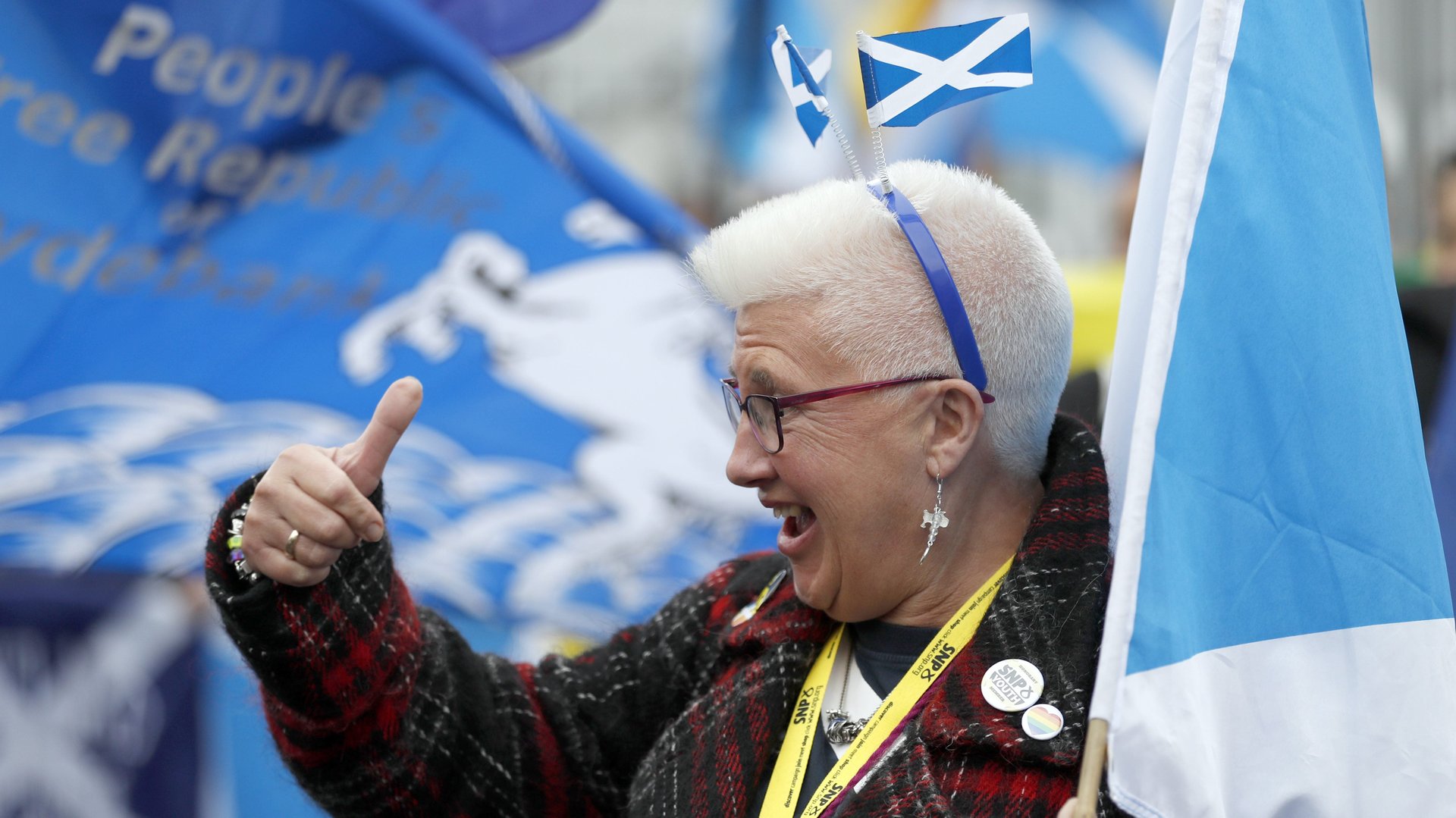Scotland will seek a second referendum on independence from the UK
A few years after the last referendum, Scots may be given the choice to vote again about whether their country should remain a part of the UK.


A few years after the last referendum, Scots may be given the choice to vote again about whether their country should remain a part of the UK.
After months of threats, Scottish first minister Nicola Sturgeon announced plans to seek another independence referendum today. At a press conference, Sturgeon insisted there was a mandate for another referendum as “the future of the UK looks very different today than it did two years,” adding “what’s at stake is the type of country we will become.”
Scots voted on independence in Sept. 2014, and 55% of voters opted to remain in the UK. Later, in the Brexit referendum of June 2016, 62% of Scots voted to remain in the EU.
The new referendum on independence would be held between late 2018 and early 2019, Sturgeon said. A website registered earlier this month with information about the vote raised over £30,000 ($37,000) for the pro-independence campaign within hours.
Sturgeon insisted the British government was given every opportunity to compromise with Scotland over Brexit. She criticized UK prime minister Theresa May and her government for failing to negotiate the terms of the exit from the EU with Scotland. While May has suggested special deals to protect the benefits of EU trade for car manufacturers (paywall) and other key industries, talks about special relationship between the EU and Scotland have been met with a “brick wall of intransigence,” Sturgeon said.
Despite being the leader of the largest party in Scotland’s semi-independent government, she was not consulted on the decision for the UK to leave the EU’s single market and still isn’t aware of when May will trigger Article 50, the part of the EU’s treaty that governs a member state’s exit from the union. (Many expect this to happen in the next few days.)
“If I ruled out a referendum, I would be deciding—completely unilaterally—that Scotland will follow the UK to a ‘hard Brexit’ come-what-may, no matter how damaging to our economy and our society it turns out to be,” Sturgeon explained.
During the 2014 independence referendum, the anti-independence camp argued that for Scotland to be sure of its position within the EU, it needed to vote to remain within the UK. After the Brexit result, this is flipped—staying within the UK implies leaving the EU, while divorcing the UK could leave Scotland free to negotiate continued membership in the bloc.
Crucially, Sturgeon will need May’s approval to hold another referendum. In response to Sturgeon’s statement, a British government spokesperson said that a second independence referendum “would be divisive and cause huge economic uncertainty at the worst possible time,” but didn’t rule one out. As she pledges to begin talks with the EU on quitting the union, respecting “the will of the people” in the process, denying Scots another independence vote would be awkward.
When asked if she could win a second referendum, Sturgeon didn’t hesitate saying yes, but opinion polls suggest it will be close. Since Britain voted to leave the EU, opinion polls have consistently shown that Scots would still vote against leaving the UK. There is also not overwhelming enthusiasm for holding a re-do referendum just a few years after the last one. Market reaction to Sturgeon’s announcement was muted, suggesting that investors aren’t anticipating a major break from the course that the UK is already on.
And while there are clear risks for the UK (and by extension, Scotland) to leave the EU’s free-trade area, it could be even more damaging for Scotland to sever similar ties with the rest of the UK. The Scottish economy is far more deeply intertwined with the UK than the EU; Scotland exports four times as much to the rest of Britain than it does to the EU, and has seen its dependence on the UK rise as its deficit grows due to falling energy prices and dwindling North Sea oil reserves.